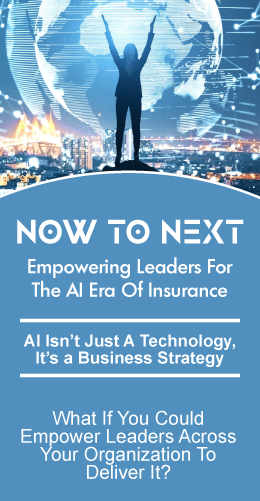Today’s customers seek more than a digital front end to legacy policies. They want a holistic, integrated solution that meets their unique needs and provides them peace of mind.
The property and casualty (P&C) insurance industry is undergoing a rapid digital transformation. One driven by the changing expectations of customers, the emergence of new digital technologies, and the rise of innovative Insurtech startups. To succeed in this new era, P&C insurance companies must up their game and offer a new generation of integrated insurance products that meet the holistic needs of their customers.
Why Do You Need To Do This Now?
“We have a clear definition of “proposition”: delivering holistic solutions with products, ecosystems, and planning tools that can better serve our customers. The proposition brings together all the necessary ingredients—the product, the ecosystem, and the expertise—into the same organization, which enables us to create something more impactful and relevant for our customers.” – Alice Liang, Chief Proposition Officer at AIA Hong Kong & Macau.
The benefits of offering integrated insurance products are clear. You can create a more loyal customer base and increase customer retention by providing a comprehensive solution covering all their insurance needs. This can result in increased revenue and profits over time.
In their Global Insurance Report 2023: Expanding commercial P&C’s market relevance Mckinsey identified offering integrated solutions to the SME market as a key opportunity for carriers to differentiate themselves on value.
One example of a company that has successfully implemented bundled insurance offerings is Lemonade. Lemonade offers homeowners, renters, and pet insurance. The company’s user-friendly mobile app allows customers to manage all their policies in one place, file claims easily, and receive quick support. Lemonade’s approach has created a loyal customer base and helped the company grow rapidly.
The Hartford offers an integrated insurance product called Spectrum, designed for small business owners. The Spectrum policy combines general liability insurance, commercial property insurance, and commercial auto insurance into a single policy. This comprehensive coverage gives small business owners the peace of mind to focus on running their businesses. They also support their customers through a mobile app, which allows policyholders to manage their policies, file claims, and contact a customer service representative. This mobile app makes it easy for small business owners to manage their insurance policies and provides the support they need to run their businesses effectively.
In their article “How to reinvent the small-business insurance market for a digital economy,” Deloitte recommends that insurers bundle more coverages to enhance convenience and lower consolidated insurance costs while bolstering chances for retention.
How Do You and Your Team Get This Done?
Step 1. Use User Experience-Driven Design
Start by conducting user research to understand your customers’ needs and pain points. This will help you to design products that meet the specific needs of your target customers.
Autonomy, the US’s largest electric vehicle subscription company, has introduced a completely digital, month-to-month auto insurance product into the Autonomy subscription bundle in partnership with Liberty Mutual Insurance. “For the first time, consumers can pay for car insurance on a month-to-month basis through an Autonomy subscription all on their smartphone,” said Scott Painter, Founder and CEO of Autonomy. “Car subscriptions represent ease and flexibility, and insurance was the missing piece of our all-in-one offering. Integrating auto insurance into our month-to-month subscription bundle solves another consumer pain point in the mobility experience and reinforces our core consumer value propositions.”
Step 2. Co-Create with Customers
Involve your customers in product development to create a sense of ownership and loyalty. Next Insurance, a startup that provides insurance for small businesses, took this approach. Next Insurance held focus groups and workshops with small business owners to understand their unique needs and used this feedback to create an insurance product that provides coverage tailored to the needs of small businesses.
Step 3. Use a Lean Approach
Start with a minimum viable product (MVP) and test it with a small group of customers.
Step 4. Use Data to Drive Decision Making
Use data analytics to understand customer behavior and identify areas for improvement.
Oscar Health uses data to improve its products by developing Care Teams, groups of care providers offering members personalized care. Data is used to match members with the right Care Team based on their health needs and preferences. The teams use data to track members’ health and provide feedback on how to improve health outcomes. This data-driven approach has enabled Oscar Health to create unique and effective solutions, including a mobile app that offers telemedicine consultations with doctors and a program that offers free primary care visits to members with certain conditions.
According to an Accenture report, “Insurance providers that can better understand customer behaviors, preferences, and needs can tailor their products, services, and interactions to meet those needs and expectations better.” (Accenture, “Accenture Technology Vision for Insurance 2021,” 2021)
Step 5. Coverage Flexibility
Offering integrated insurance solutions that can easily flex as the customers’ needs change is essential for several reasons. Customers’ insurance needs can change over time. For example, a small business may start with a basic liability policy. Still, as the business grows and employs more, additional coverage options like workers’ compensation or professional liability insurance may be needed. By offering customizable coverage that can adapt to the changing needs of their customers, insurers can provide value and build long-term relationships with their clients.
Liberty Mutual’s Business Owner’s Policy (BOP) allows customers to tailor their policies to fit their unique needs by adjusting their coverage levels, deductibles, and limits. This can be done online through their digital platform or by contacting a representative directly. Customers can also add coverage options for specific needs, such as business equipment breakdown coverage or personal injury protection for auto insurance.
The flexibility of Liberty Mutual’s customizable coverage also allows customers to change their coverage over time as their needs evolve. For example, they can increase or decrease coverage limits, add or remove coverage options, or adjust their deductibles to fit their changing risk profile.
Step 6: Emphasize Design and Business Model Agility and Flexibility
Insurers must be willing to experiment and adapt their offerings based on customer feedback and changing market conditions. This requires a culture of innovation, an agile operating model, and a willingness to take calculated risks.
In addition to the benefits to customers and insurance companies, integrated insurance offerings can have positive societal impacts. For example, integrated policies can help reduce the protection gap between insured losses and economic losses, a major issue in many parts of the world. By offering comprehensive policies that cover all of a customer’s insurance needs, insurers can help to close this gap and reduce the financial impact of major events such as natural disasters.
The digital transformation of the P&C insurance industry is well underway, and the rise of integrated insurance offerings is a major trend set to continue. By embracing this trend and using a customer-centric approach, insurers can create a loyal customer base, increase revenue and profits, and have positive societal impacts.
Integrated P&C insurance solutions are changing the future of the business by offering customers a seamless, personalized experience with tailored coverage options, simplified claims processing, and digital platforms. This level of integration allows insurance companies to respond to customers’ needs more quickly and efficiently, resulting in increased customer satisfaction and loyalty.
Overall, the key to success in the integrated P&C insurance market is to have a customer-centric approach and a culture of innovation that allows companies to continuously improve and adapt to meet the changing needs of their customers.
The insurance executives who can lead their companies through this transformation will be the most successful in the future.
Let’s get started.
Mike Connor, CEO, SVIA
Your thoughts and comments are appreciated.








